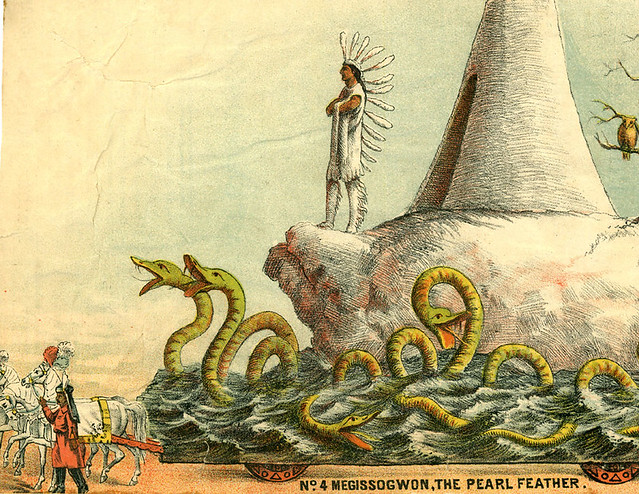Hiawatha faces Megissogwon, manito (spirit) of wealth, who is impervious in his shirt of wampum, the hard shell beads once used as currency. After a day-long battle, Hiawatha has only three arrows left. Victory appears impossible until --
Suddenly from the boughs above him
Sang the Mama, the woodpecker:
‘Aim your arrows, Hiawatha,
At the head of Megissogwon,
Strike the tuft of hair upon it,
At their roots the long black tresses;
There alone can he be wounded!’
And so, thanks to a bird’s revelation of his fatal vulnerability, another monstrous symbol of material wealth is brought down by a bowman almost at the end of his arrows.
Huh.

There is much more background to this, and how it was discovered, here. The discussion in the article of the relationships among Hiawatha, the Kalevala and Tolkien's epic are illuminating.
The Guttenberg "Hiawatha" here.
See Jeff Thompson's National Geographic illustrations of Hiawatha and Megissogwon here.
I love this convergence of the Eddas, The Kalavala, Hiawatha and The Hobbit's Smaug so much -- particularly, as the article's author notes, that both Longfellow and Tolkien were language professors.

No comments:
Post a Comment